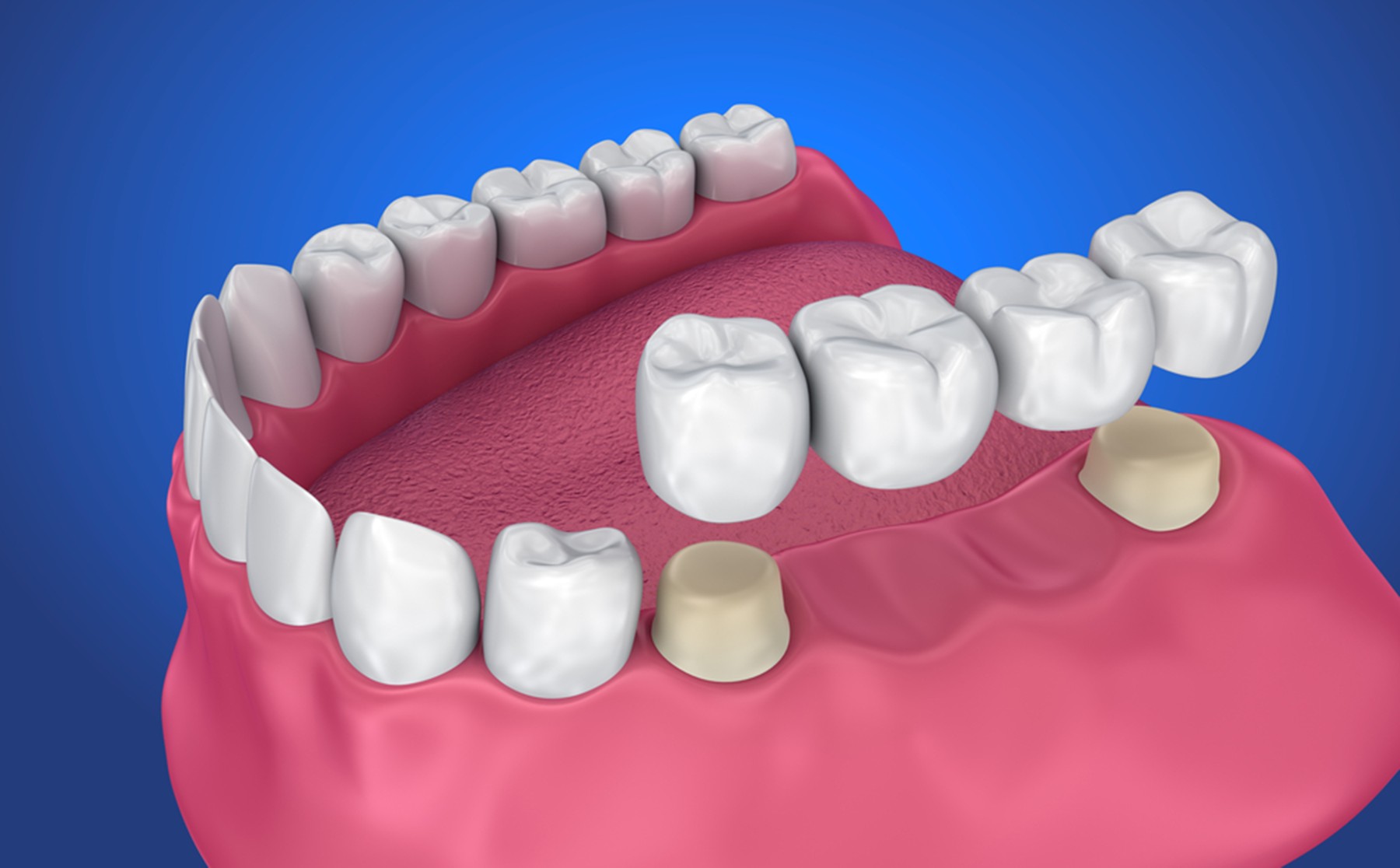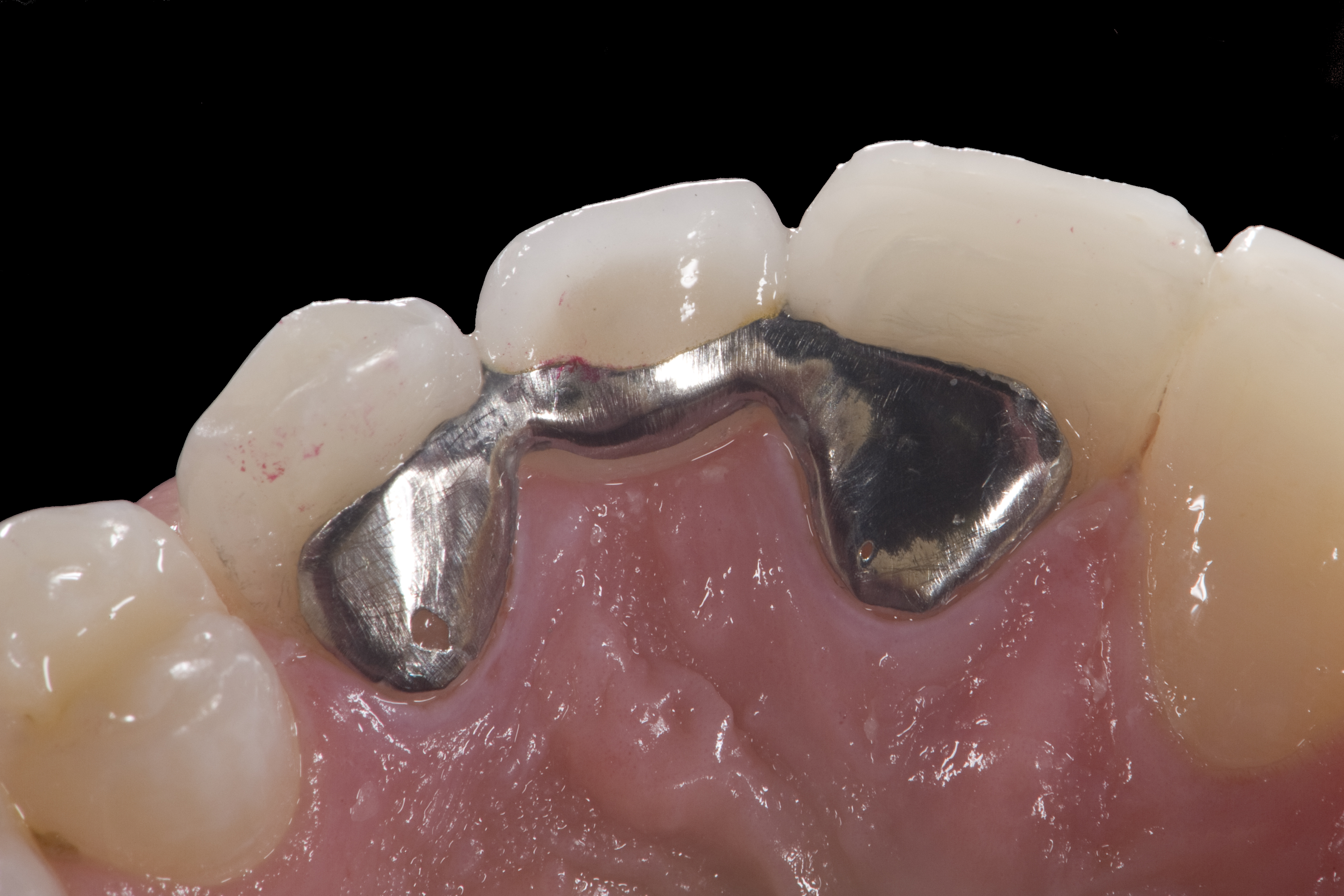Missing teeth can hamper the function and aesthetics of the smile. A porcelain fixed bridge is one of the finest options available for replacing missing teeth. It is a dental prosthesis used to replace one or more missing teeth. It is called “fixed” because it is cemented into place and cannot be removed by the patient. In this blog, you will learn what a porcelain fixed bridge is, explore the different types available, and highlight the numerous benefits it offers.
Types of PFM Bridges
Porcelain-fused-to-metal or PFM bridges are a common type of dental prosthesis that combines the strength of metal with the natural appearance of porcelain. Here are the main types of PFM bridges:
-
Traditional Porcelain Fixed Bridge
This is the most common type of bridge. It involves fabricating a crown or implant on both sides of the missing tooth, with a filler called a pontic in between. Traditional bridges are usually fixed and made of porcelain fused with metal or ceramics. They are durable and can function as either molars or front teeth.
-
Cantilever Bridge

A cantilever bridge is used in cases where adjacent teeth are on only one side of the gap, or there are no adjacent teeth at all. This type of dental bridge isn’t widely favored but is frequently chosen for situations where the force exerted on the bridge isn’t significantly high, such as in the case of front teeth.
-
Maryland Bonded Bridge or Resin-bonded Bridge
Maryland bridges rely on a pontic, which is supported by a metal or porcelain framework. The treatment will be done cemented on the back of the two neighboring teeth. This bridge puts less pressure on the adjacent teeth and is typically used for anterior teeth.
-
Implant-supported Bridge
Dental implant bridges differ from natural-tooth-supported bridges because they are anchored on dental implants. This particular bridge type is used when there’s instability in multiple central teeth, making it an ideal solution for tooth replacement. For each missing tooth, one implant is placed, providing support for the bridge. Consequently, bridges supported by implants offer a high level of stability, allowing patients to experience the sensation of having natural teeth.
Advantages of Porcelain Fixed Bridges
Porcelain fixed bridges offer several advantages:
-
Improved function
Porcelain fixed bridges restore the natural aesthetics of adjacent teeth and facilitate proper mouth function, enabling correct eating and speaking. This improvement can enhance your quality of life and overall health, allowing you to maintain a proper diet and communicate without interference.
-
Aesthetic Improvement
A porcelain bridge is a dental restoration that mimics a gum line like a natural set of teeth. It is made to complement the color, size, and shape of the teeth already present, making it blend with the natural teeth. This can make you feel more confident about your smile and, hence, more relaxed with people.
-
Preventing Tooth Movement
If a tooth crown is lost, the remaining teeth move in that area until a gap is created. As a result, improper jaw alignment may occur, leading to bite problems. A fixed bridge enables the dentist to make impressions with teeth in their normal position, which has positive effects on dental health.
-
Long-lasting Solution
If PFM bridges are well maintained, they can last for a decade. They do not cause any changes or alterations in the color of the teeth and are durable. This means that they are long-term solutions for tooth replacement. It is advisable for someone who has had a bridge installed to visit the dentist every six months to a year.
-
Supporting Facial Structure
Porcelain bridges support facial structure by replacing missing teeth. When teeth are lost, it can affect the surrounding bone and cause the face to sag or appear hollow. Porcelain bridges fill in the gaps left by missing teeth, which helps to maintain the natural shape of the face. The porcelain material used in bridges resembles natural tooth enamel, providing a natural-looking restoration that blends seamlessly with the surrounding teeth. This helps to restore proper chewing function and can improve overall facial aesthetics.
Comfort and Stability
Porcelain fixed bridges are custom-made to fit your mouth precisely. This tailored fit ensures maximum comfort, allowing you to speak and eat without discomfort. Once installed, porcelain fixed bridges provide stable support for replacement teeth. They are securely anchored to adjacent natural teeth or dental implants, preventing them from shifting or moving while you talk or chew.
Improved Oral Health
Improved oral health with porcelain fixed bridges involves filing neighboring teeth to support crowns. This process not only addresses any decay or damage but also helps prevent the accumulation of plaque and bacteria in the wide spaces resulting from missing teeth. This maintenance of oral hygiene contributes to overall oral health and well-being.
Tips for Maintaining PFM Bridges
- Brush and floss twice a day, focusing on the area around the bridge, as plaque accumulation and gum disease are possible.
- Visit the dentist every six months for a follow-up check-up.
- Avoid hard and sticky foods that can harm the bridge.
- Tobacco damages oral health; it also stains porcelain.
Conclusion
A porcelain fixed bridge is commonly used to fill gaps resulting from the absence of one or more teeth. It is efficient and offers cosmetic benefits. Numerous varieties are available, and consulting with a dentist will help determine the most suitable solution for an individual case. If you’re considering this treatment, it’s crucial to find the best option in your area. To schedule a consultation with Le Sueur Family Dental, please contact us at (507) 665-6812 or conveniently schedule your appointment online.


